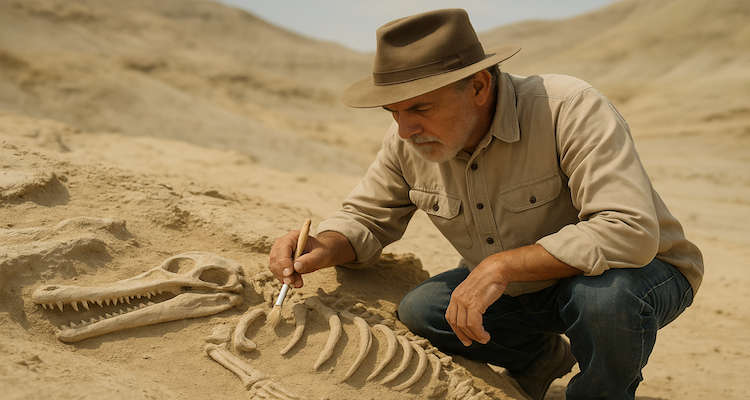Fossil of Ancient Dolphin-Like Creature Unearthed in Peru
Peruvian scientists have unveiled a fossilized dolphin-like creature dating back 8–12 million years, offering fresh insights into ancient oceans and marine evolution.
Introduction: A Window Into an Ancient Ocean
In a groundbreaking revelation, Peruvian paleontologists have unveiled the fossilized skeleton of a marine creature resembling a dolphin that lived millions of years ago. Estimated to be between 8 and 12 million years old, the discovery offers a rare glimpse into the country’s prehistoric oceans and adds to Peru’s growing reputation as one of the world’s richest sites for marine fossils.
The Discovery in the Ocucaje Desert
The fossil was unearthed in July in the Ocucaje Desert, a barren stretch of land located south of Lima. Today it is an arid desert, but millions of years ago it formed part of the Pacific Ocean.
According to experts, the area functioned as a natural sanctuary for marine life due to its geography. Coastal mountains shielded the waters from strong currents, creating a calm environment that allowed diverse marine species to thrive and reproduce.
Expert Insight: A “Great Hotel” for Prehistoric Life
Renowned Peruvian paleontologist Mario Urbina, part of the team behind the discovery, described the region as a “great hotel” for ancient sea creatures. He explained that the calm waters provided safe breeding grounds, helping marine populations flourish for nearly 45 million years before geological shifts reshaped the landscape into the desert seen today.
What the Fossil Tells Us About Ancient Peru
The research team, working with Peru’s Geological, Mining and Metallurgical Institute (INGEMET), emphasized that the find is more than just a preserved skeleton it is a key to understanding the shifting coastlines and oceanic geography of South America. By studying these fossils, scientists can reconstruct how climate, sea levels, and ecosystems evolved across millions of years.
Peru’s Expanding Fossil Record
Peru has become a hotspot for remarkable paleontological finds:
-
Earlier in 2024, scientists uncovered the skull of the largest known river dolphin, a species that swam through what is now the Amazon Basin about 16 million years ago.
-
Just months before that, researchers revealed the fossil of a 9-million-year-old relative of the great white shark, further proving that the region once teemed with powerful marine predators.
These discoveries underline Peru’s deserts as a natural “cemetery” for ancient marine life, preserving extraordinary remains of animals that vanished long ago.
Why This Discovery Matters
The dolphin-like fossil highlights how much of today’s dry landscape was once submerged beneath vast oceans. Each new discovery deepens scientific understanding of evolutionary biology, ocean ecology, and the environmental forces that shaped Earth’s past.
For modern Peru, these findings also bring cultural and scientific prestige, reinforcing its status as a leading center for paleontological research in Latin America.
Looking Ahead: Reconstructing Ancient Oceans
While the skeleton is still under detailed examination, paleontologists hope it will provide new insights into the species’ diet, evolutionary lineage, and eventual extinction. Future research could help piece together the biodiversity of prehistoric oceans and refine our understanding of how marine ecosystems respond to dramatic environmental changes.
Conclusion: A Story Written in Stone
The unveiling of this fossil is a reminder that Peru’s deserts were once thriving seas, home to marine giants and mysterious species that still fascinate scientists today. Each bone and fragment tells a story millions of years in the making one that continues to reshape our view of Earth’s deep history.
(Disclaimer: This article is based on verified paleontological findings and official statements from Peruvian researchers. Interpretations are presented for educational purposes.)
ALSO READ: Could Earthquakes Be Predicted Through Animal Behavior?











